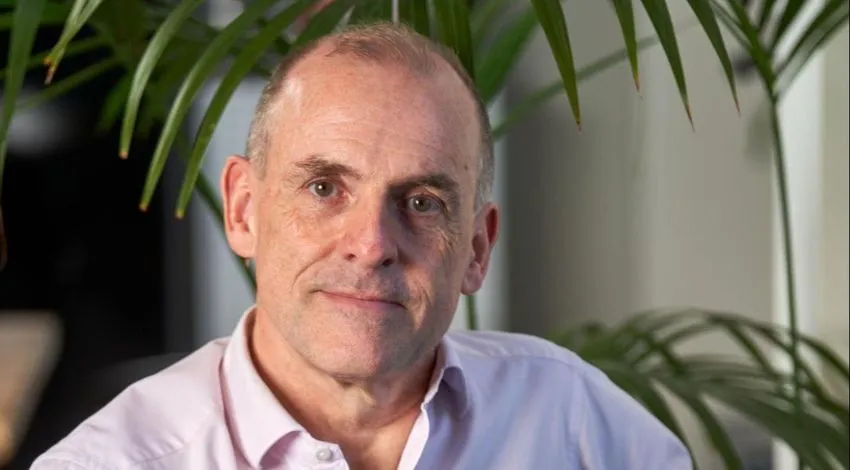Paul Pester’s Mission: Transition Consumers to Low-Carbon
Tandem Bank launched in 2013 as part of the first round of U.K. challenger banks set on reshaping the industry through fintech and digital banking. The bank has since sought to distinguish itself among this group of challengers by foregrounding the importance of sustainability to its customers.
“Helping mainstream consumers transition to a low-carbon lifestyle and save some money along the way, we are very focused on delivering a brand experience to our customers and helping them understand how they can reduce their carbon footprint,” said Paul Pester, Tandem’s chairman, in a recent interview.

Sustainable Banking?
The numbers tell part of the story. Tandem has committed to channelling over 67% of its lending activity toward green initiatives, and the bank steadfastly refuses to invest in fossil fuels or other environmentally harmful industries. Even funds from Tandem savings accounts are explicitly earmarked for sustainable investments.
But how does this green focus translate to actual banking products? Tandem has developed a suite of offerings designed to incentivise sustainable choices. These include low-emission motor loans, financing for green home improvements, discounted mortgages for energy-efficient homes, and green savings accounts.
The bank’s app goes beyond mere account management, explained Paul Pester, allowing customers to track the environmental impact of their spending habits and receive personalised tips on reducing their carbon footprint.
“We’ve got some great services in the app where you can enter a postcode and it will give you your [Energy Performance Certificate] rating for your home, and will then suggest the next steps you can take specifically for your house to improve its carbon footprint,” he said.
Pester elaborated on Tandem’s approach to technology and customer needs. “As a company, you have to be really clear on what problem you’re fixing for your customers,” he said. “Just because you can do something with the technology doesn’t mean you should do it, and it doesn’t mean the customer’s going to care about it.”
This customer-centric approach is central to Tandem’s strategy. The bank is betting that by aligning its services with the values of its target demographic — particularly millennials and Generation Z — it can build a loyal customer base and drive growth.
Brand Building and Values
But does this focus on sustainability come at the cost of profitability? Pester argues emphatically it does not. Drawing on his experiences thus far at Tandem and in his previous role as CEO of TSB and Virgin Money, he makes a case for the economic viability of value-driven banking.
“I believe that strong values in the brand actually helps the economic performance of the business,” Paul Pester asserted in the interview. He pointed to Tandem’s ability to maintain competitive interest rates without always having to offer the highest rates in the market as evidence of this approach.
“By building a brand and building a set of values, it enables a business to maintain, certainly in a bank, maintain its margins and to actually be more financially successful,” Pester explained.
It’s a strategy, he argued, that allows Tandem to reduce customer acquisition and retention costs and use the savings to build a brand with a low-carbon focus. Pester’s vision for Tandem is deeply rooted in his belief in the power of brand equity. He drew parallels to his time at Virgin Money, where the concept of “paying into the brand bank” was a guiding principle. The idea is that by consistently delivering value to customers and reinforcing the brand’s core values, a company builds up a reservoir of goodwill that can sustain it through challenging times and reduce the need for costly customer acquisition efforts.
This strategy is not without its challenges, however. As Pester acknowledged, it requires a certain leap of faith from the board and investors. The payoff from investing in brand values and sustainability initiatives may not be immediately apparent in quarterly earnings reports. This is where Pester’s data-driven approach comes into play.
“It is possible to build early indicators,” Pester explained in the interview. He advocated for a granular approach to data analysis, looking at customer engagement metrics, campaign performance, and cohort analysis to track the effectiveness of Tandem’s strategy. “That integrated view of customer cohorts is absolutely vital because early on, book performance from the customers certainly shows when things are not working,” he noted.
Minding the Gap
This commitment to data-driven decision-making extends to Tandem’s efforts to track and report on what they call the “green gap” — the disparity between consumers’ intentions to adopt more sustainable lifestyles and their actual progress toward that goal. The bank’s annual reports on this metric provide valuable insights into shifting consumer attitudes toward sustainability.
The most recent update to this research shows some promising trends. There has been a 31% increase in solar panel installations, a 27% increase in electric and alternative fuel vehicle registrations, and a 45% expansion of the U.K.’s electric charging network. However, the persistence of a projected 25% green gap for October 2024 underscores the ongoing need for initiatives like Tandem’s.
To further bolster its sustainability efforts, Tandem recently created the position of head of environmental, social, and governance, appointing James Streeter to the role. The move signals the bank’s commitment to integrating ESG principles into every aspect of its operations and to staying ahead of the regulatory environment in the financial services sector.
